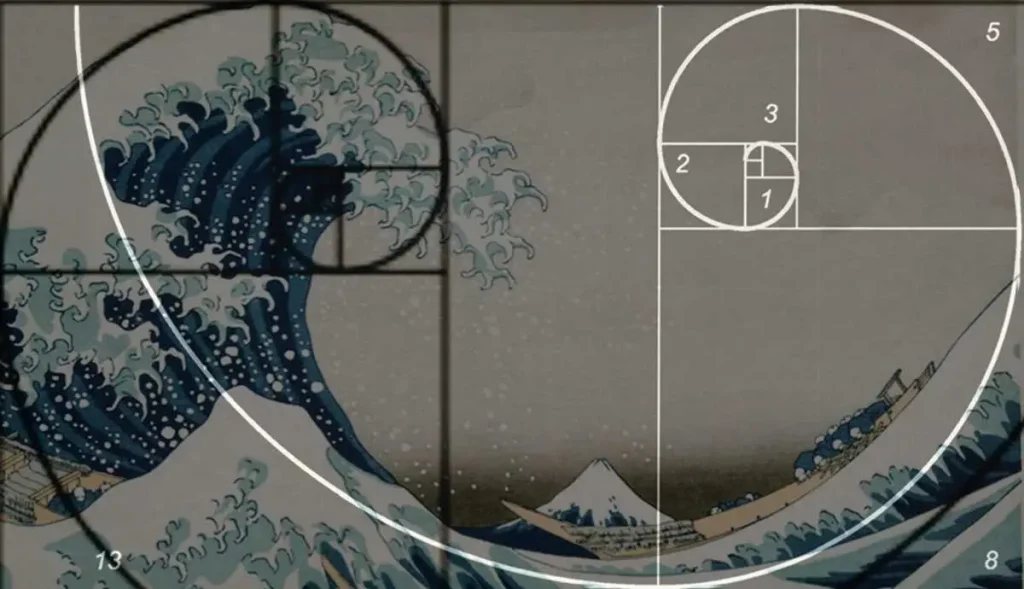What do you see when you come across the Mona Lisa? Or when you come across the silhouette of the modular man in the buildings made by Le Corbusier? Both these images stem from a particular mathematical equation that is very popular in the art and architectural world. It is called the Golden Ratio. The golden ratio or the Golden Mean, Golden section or the Greek letter phi is a unique ratio that is important within the world of art, architecture, and design. It is also known as the divine proportion which is a mathematical ratio of 1:1.618 with a decimal that stretches to infinity. Many artists, designers, and architects have utilised this ratio in their works of art over the centuries, this helped them create great balance and symmetry within their creations.

What is the Golden Ratio?
The golden ratio is manifested as a sizable rectangle subdivided into a sequence of squares. To determine the precise proportions of the golden ratio, one can bisect the rectangle, ensuring that the ratio of the longer segment to the shorter one equals the ratio of the entire length to the longer segment. This division process can continue indefinitely, forming a curving sequence.
Many works of art by famous painters have also seen the depiction of the Golden ratio such as The Last Supper by Leonardo Da Vinci, The Mona Lisa, and The Vitruvian Man. It was believed that the ratio had biblical notions back in the Renaissance period. A panoramic scene with the underlying mathematical composition can be seen across the painting.
Corbusier’s Modulor Man and His Architecture
Le Corbusier held the view that the metric system depersonalised objects. In his perspective, a meter lacks a specific reference, unlike the ancient measures such as the foot, the cubit, and the hand span, which were rooted in human dimensions. Le Corbusier illustrates the shift from the articulated arm, a tool architects traditionally used for measurements involving meters, decimetres, and centimetres. According to him, in the pursuit of rationalization, architects, surveyors, and urban planners inadvertently stripped away a sense of humanity from their practices. He used the man as a way of sizing his architecture to a human scale, as then the structures of the architecture would become livable for humans. Le Corbusier implemented the Modulor system in his architectural projects, such as the government complexes in Chandigarh, India, and his rural retreat, Le Cabanon, which is in the southern part of France. The Modulor system gathered considerable acclaim and found its way into the work of designers, including Georges Candilis and Jean Prouvé. Despite its widespread praise, the Modulor system did not see extensive adoption, possibly because Le Corbusier intended to patent the system and receive royalties from buildings utilizing it.

Golden Ratio in Architecture
The pyramid of Giza is one of the most illustrious examples of the implementation of the golden ratio or phi in architecture. The ratio of the height of the pyramid to either of the sides of its base approximately equals to Phi.

The Golden Ratio as a concept was utilized in Greek architecture to provide a syncretic relationship between the width and the height of the building structures. The size of the portico and the placement of the columns were also supported within the ratio implemented in the architecture. The same principle was then again applied to the Neoclassical architecture.
Besides Le Corbusier, we have had structures by Mies Van Der Rohe in modern times who has used the same mathematical principle, his structures are minimalistic and align greatly with the golden ratio.
The golden ratio helps architects develop unique designs and shapes for buildings and structures, it helps them determine a good height and width for their structures which are harmonious to the overall space/structure, and helps them determine the right proportions that are balanced and harmoniously connected. The Golden ratio has been used to guide the placement of elements in an architectural structure that is both artistic and balanced.
Elements that are made proportionately or are aligned properly, naturally become aesthetically appealing to the human eye. However, in this new-age modern era with the architectural climate changing and evolving rapidly, the Golden ratio may have taken a back seat. It may not be seen in architecture a lot lately, although it is being used in illustrations and graphic design quite a bit. Rafael Araujo is a Venezuelan architect and illustrator who has been a keen observer of the Golden ratio in the natural environment and has developed a collection of beautiful illustrations made entirely by hand and a few basic geometry tools. He has brilliantly reflected the mathematical spiral in his works of art inspired by nature.

Rafael Araujo has showcased his work at the CNN World, Wired Magazine, WWF, and many prestigious galleries, including exhibitions at Stanford University and various other esteemed locations.
Grand Theft Auto VI and the Evolution of Architecture in the Gaming Industry





